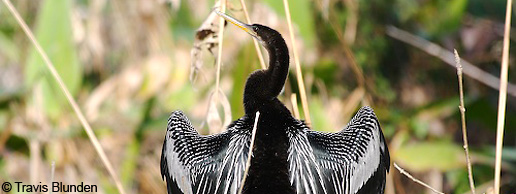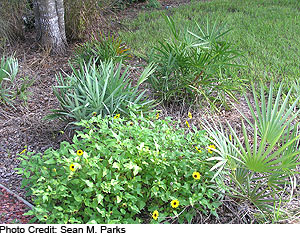
Landscaping with Natives
 Plant NATIVE plant species whenever possible. Landscaping with native plants not only provides better food and cover for native wildlife than do non-native plants, but also requires less care and resources to maintain. Native plant species have evolved and adapted to local conditions over thousands of years. They are usually much more tolerant to climatic conditions at a given location. Once established, most species require little or no additional irrigation beyond normal rainfall. They typically grow more slowly, generating much less yard waste.
Plant NATIVE plant species whenever possible. Landscaping with native plants not only provides better food and cover for native wildlife than do non-native plants, but also requires less care and resources to maintain. Native plant species have evolved and adapted to local conditions over thousands of years. They are usually much more tolerant to climatic conditions at a given location. Once established, most species require little or no additional irrigation beyond normal rainfall. They typically grow more slowly, generating much less yard waste.
Each native plant species is a member of a community that includes other plants, animals, and microorganisms. The natural balance keeps each species in check. Plants thrive in conditions to which they are adapted. However, other organisms (e.g., insects) prevent plants from spreading uncontrolled. Thus, native species rarely become invasive, unlike some exotic plants imported from other areas.


 Location: http://yourdomain.edu
Location: http://yourdomain.edu